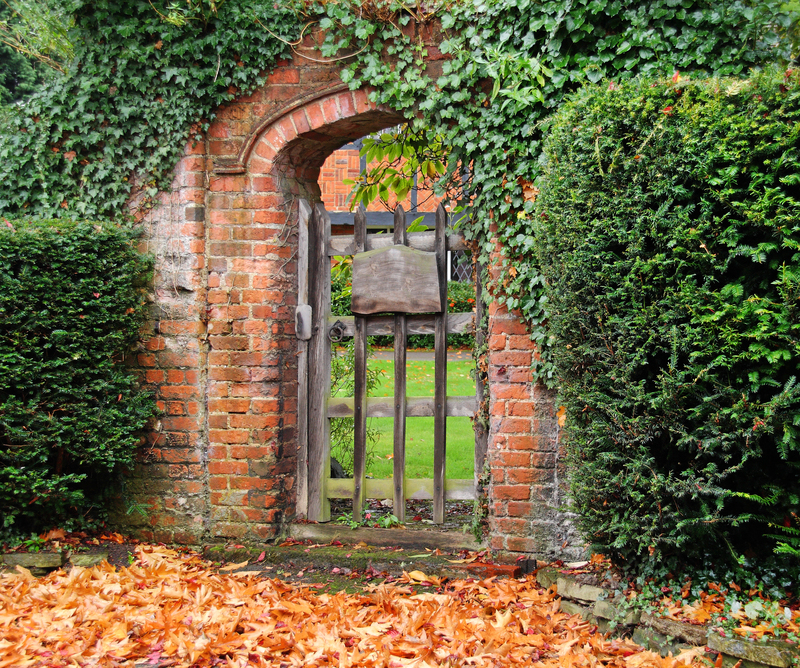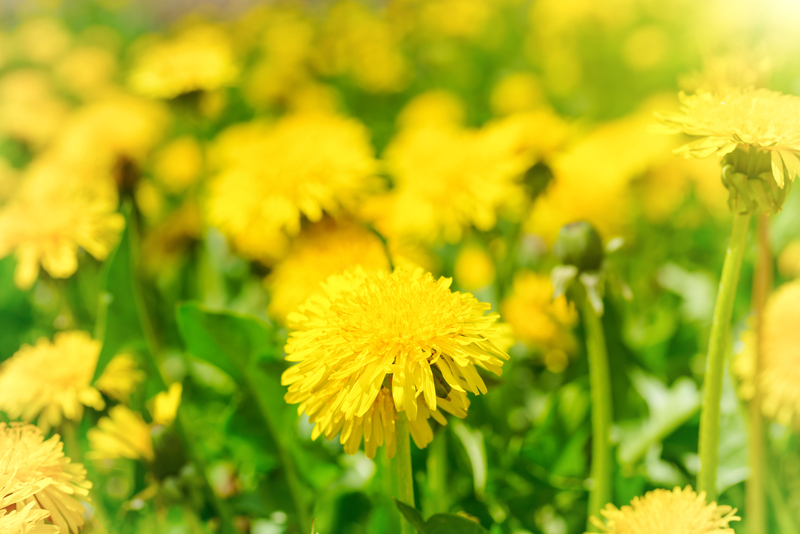Discover Techniques to Keep Your Garden Alive This Winter
Posted on 13/06/2025
Discover Techniques to Keep Your Garden Alive This Winter
When the days grow shorter and the cold sets in, many gardeners worry about how their beloved plants will fare. Keeping your garden alive during winter may seem challenging, but with the right preparation and care, it's entirely possible to maintain a vibrant, healthy outdoor space throughout the colder months. In this comprehensive guide, you'll discover various techniques and expert advice to help your winter garden not only survive but thrive.
Why Protecting Your Winter Garden Matters
Winter can bring harsh conditions like frost, snow, chilling winds, and fluctuating temperatures, all of which can damage plants. The key is to shield your garden using suitable winter gardening techniques that ensure plants get through the season intact. Whether you cultivate vegetables, perennials, or tender ornamentals, maintaining garden life in winter can be rewarding and even productive, offering a green escape during the chilly months.

Understanding the Challenges Your Garden Faces in Winter
Before diving into how to keep your garden alive this winter, it's essential to recognize the obstacles your plants encounter:
- Freezing temperatures can damage plant tissues and disrupt root systems.
- Frost and snow may break branches and smother delicate perennials.
- Reduced sunlight and shorter days slow photosynthesis, weakening plant growth.
- Fluctuating temperatures may trick plants into early budding, leading to frost damage.
- Dry winter winds strip moisture from leaves and soil, increasing the risk of dehydration.
Essential Techniques to Keep Your Garden Alive This Winter
1. Mulching: Your Garden's Winter Blanket
Mulch acts as insulation, protecting plant roots from extremes of cold. Applying a fresh layer of mulch helps keep soil temperatures stable and prevents moisture loss.
- Use organic mulches like shredded leaves, straw, wood chips, or bark for added nutrients.
- Aim for a layer that's 2-4 inches thick, leaving space around stems to avoid rot.
- Mulch not only keeps garden plants alive in winter but also suppresses weeds and enriches the soil.
2. Watering Wisely in Winter
Many gardeners overlook the importance of watering in winter. However, dehydration can be just as damaging as frost.
- Water on warmer days when the ground isn't frozen.
- Ensure deep, thorough watering of evergreens and newly planted trees or shrubs before the ground freezes.
- Avoid watering during freezing temperatures to prevent ice buildup on roots.
3. Create Windbreaks to Shield Delicate Plants
Harsh winter winds can cause severe damage by dehydrating leaves and increasing the risk of breakage.
- Use burlap screens, garden fabric, or strategic plantings (like hedges) to block prevailing winds.
- Protect young or tender plants with temporary covers.
- Windbreaks also help retain warmth in your garden beds.
4. Row Covers and Cold Frames for Season Extension
For gardeners eager to keep harvesting and enjoying blooms through winter, season extenders like row covers, cold frames, and cloches can make all the difference.
- Row covers made from lightweight fabric insulate against frost yet allow light and moisture through.
- Cold frames, essentially mini-greenhouses, provide a protected microclimate for overwintering greens and herbs.
- Cloches (individual plant covers) safeguard young or delicate specimens from cold snaps and snow.
Protecting Specific Garden Types in Winter
How to Keep a Vegetable Garden Alive During Winter
Winter vegetable gardening is possible with careful crop selection and proper protection. Some vegetables are remarkably hardy and can be harvested even in cold weather, provided they're cared for correctly.
- Choose cold-tolerant crops (e.g., kale, spinach, carrots, leeks, and Brussels sprouts).
- Mulch heavily and consider using row covers or tunnel hoops for added warmth.
- Stagger plantings in early fall to ensure mature crops enter winter with established roots.
- Harvest root crops as needed during warm spells, or store them in place under an extra-thick mulch cover.
Maintaining Perennials and Shrubs Through Winter
Perennials and shrubs need special attention to make it through harsh conditions. Learn how to protect these garden essentials during winter:
- Prune dead or damaged branches in late fall to prevent breakage under snow.
- Wrap delicate shrubs or young trees with burlap for windburn protection.
- Add a mound of mulch around the base for extra root insulation.
- Avoid heavy pruning in late fall; focus instead on removing hazards so plants can enter dormancy naturally.
Protecting Container Plants and Annuals
Container gardens are especially vulnerable since their roots are more exposed to temperature swings. Discover ways to keep potted plants alive this winter:
- Move pots to a sheltered location (close to a wall, into a shed, or under a porch).
- Group pots together to share warmth and cover with insulating wrap or bubble plastic.
- Use frost-resistant containers (ceramic or thick plastic), and avoid overwatering.
- Annuals may be composted, but consider overwintering favorites like geraniums indoors.
Advanced Techniques for Protecting Your Garden Over Winter
Soil Preparation and Fertilization
Healthy soil is your best ally for keeping a garden alive through the winter. Focus on soil preparation to support root health and plant vigor:
- Test your soil's pH and nutrient levels in fall.
- Add compost or slow-release organic fertilizer to boost soil fertility.
- Avoid high-nitrogen fertilizers late in the season, as they encourage tender growth susceptible to frost.
Winter Pruning Best Practices
Pruning in winter, when done correctly, can strengthen your plants and improve next season's growth:
- Prune dead, diseased, or crossing branches from trees and shrubs.
- Wait until late winter for major pruning to prevent stimulating new growth ahead of a freeze.
- Use sterilized, sharp tools to minimize disease spread.
Embracing Native and Hardy Plant Varieties
If you live in an area with regular frosts and snow, integrating native or winter-hardy plants into your landscape is one of the best techniques for a low-maintenance, vibrant garden all year.
- Native plants are naturally adapted to your region's winter climate.
- Look for perennials and shrubs with a reputation for cold hardiness (like hellebores, sedum, or viburnum).
- Cold-hardy ground covers, such as creeping thyme or lamium, help protect soil and provide winter interest.
The Role of Wildlife and Garden Cleanup
Encouraging Beneficial Wildlife
Did you know that allowing portions of your garden to remain undisturbed can actually benefit your winter garden? Beneficial insects, birds, and small mammals help control pests and contribute to a healthy garden ecosystem.
- Leave some seed heads, ornamental grasses, and leaf litter for shelter and food.
- Add bird feeders or nesting boxes to attract pest-eating birds.
- Avoid excessive fall cleanup to support biodiversity and promote natural plant protection.
Tidy Up Without Over-Cleaning
While you don't want to strip your garden bare, certain tasks are important:
- Remove diseased plant material to prevent overwintering pests and pathogens.
- Compost healthy spent plant debris for spring soil improvement.
- Clean and store garden tools to keep them rust-free and ready for next season.
Common Mistakes to Avoid When Winterizing Your Garden
- Neglecting to water during dry spells.
- Applying fertilizer too late in the fall, encouraging new growth vulnerable to frost.
- Over-pruning shrubs and trees, which can weaken plants.
- Leaving containers exposed where they can freeze and crack.
- Ignoring pest and disease control as insects can overwinter in plant debris.

Innovative Approaches for a Lush Winter Landscape
Looking for ways to bring even more beauty to your winter garden? Try a few of these creative solutions:
Use Evergreens for Year-Round Color
- Incorporate conifers, holly, boxwood, and winter-flowering shrubs for structure and visual interest.
- Group broadleaf evergreens in sheltered corners for extra protection and seasonal cheer.
Grow Winter-Flowering Plants
- Experiment with hellebores, snowdrops, or witch hazel for blooms during the coldest months.
- Plant flowering bulbs in fall for pops of early spring color as winter fades.
Plan for Spring Now
- Order seeds and browse garden catalogs for next season's inspiration.
- Start certain cold-hardy vegetables (onions, garlic, spinach) in winter for an early spring harvest.
Conclusion: Garden Living Throughout Winter Is Possible!
Discovering and applying techniques to help your garden survive through winter ensures a thriving, lively landscape even when snow blankets the ground. With careful preparation--mulching, watering wisely, protecting from wind, using covers, and choosing the right plants--you can keep your garden alive and beautiful all winter long.
Remember, every garden is unique: experiment with these tips and see which methods work best for your space and climate. Turn winter from a time of dormancy into a season of opportunity, and let your garden inspire you with resilience and quiet color, even in the coldest months.
- Assess your space and create a winter plan.
- Invest in simple protections like mulch and covers.
- Encourage wildlife for a balanced winter ecosystem.
- Stay vigilant (but not obsessive) about watering and cleanup.
- Celebrate small successes and enjoy your garden's winter charm!
Ready to tackle winter gardening? With these comprehensive, expert-approved techniques, discover how to keep your garden alive this winter--and set the stage for a triumphant return of growth come springtime!

